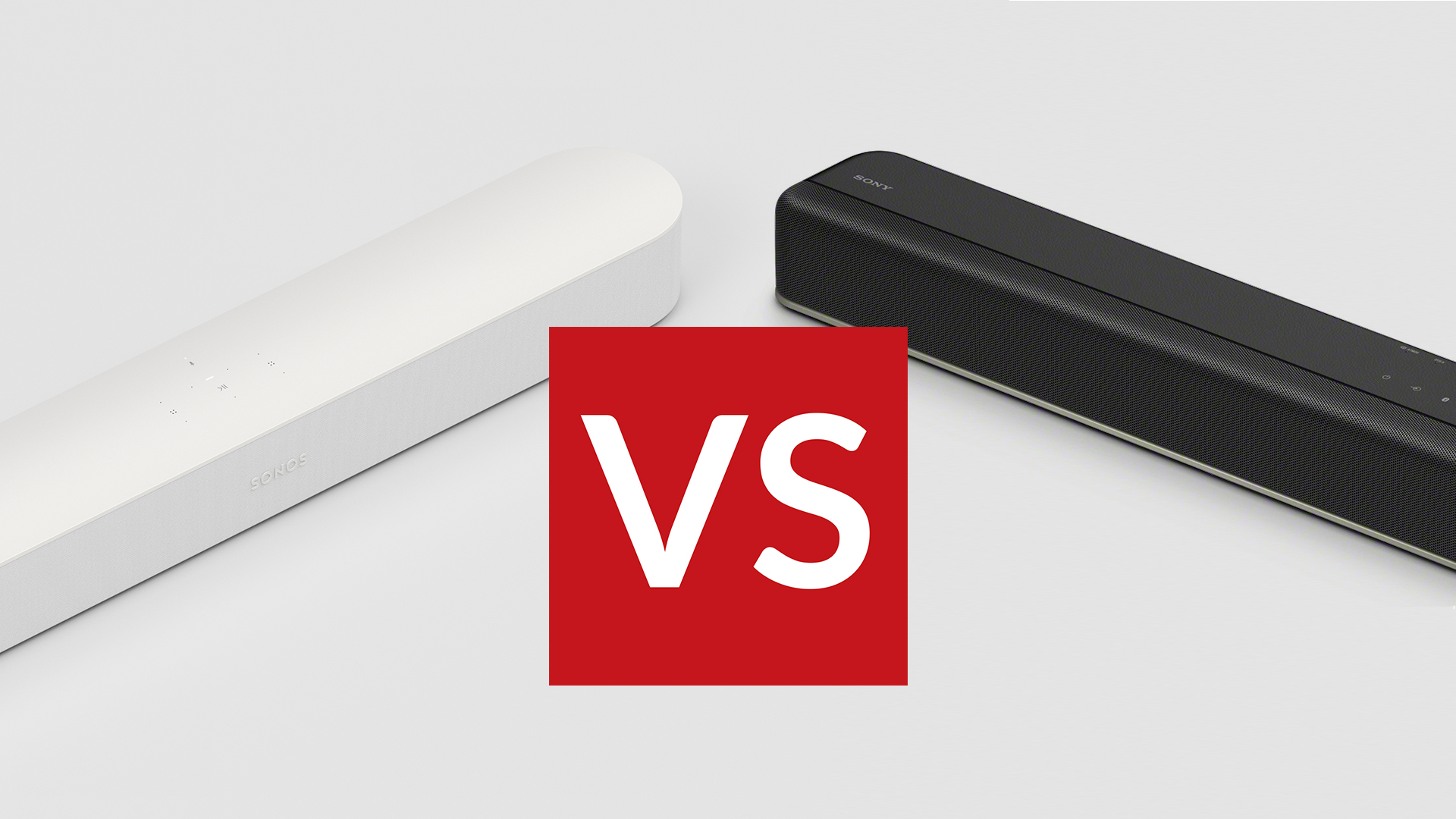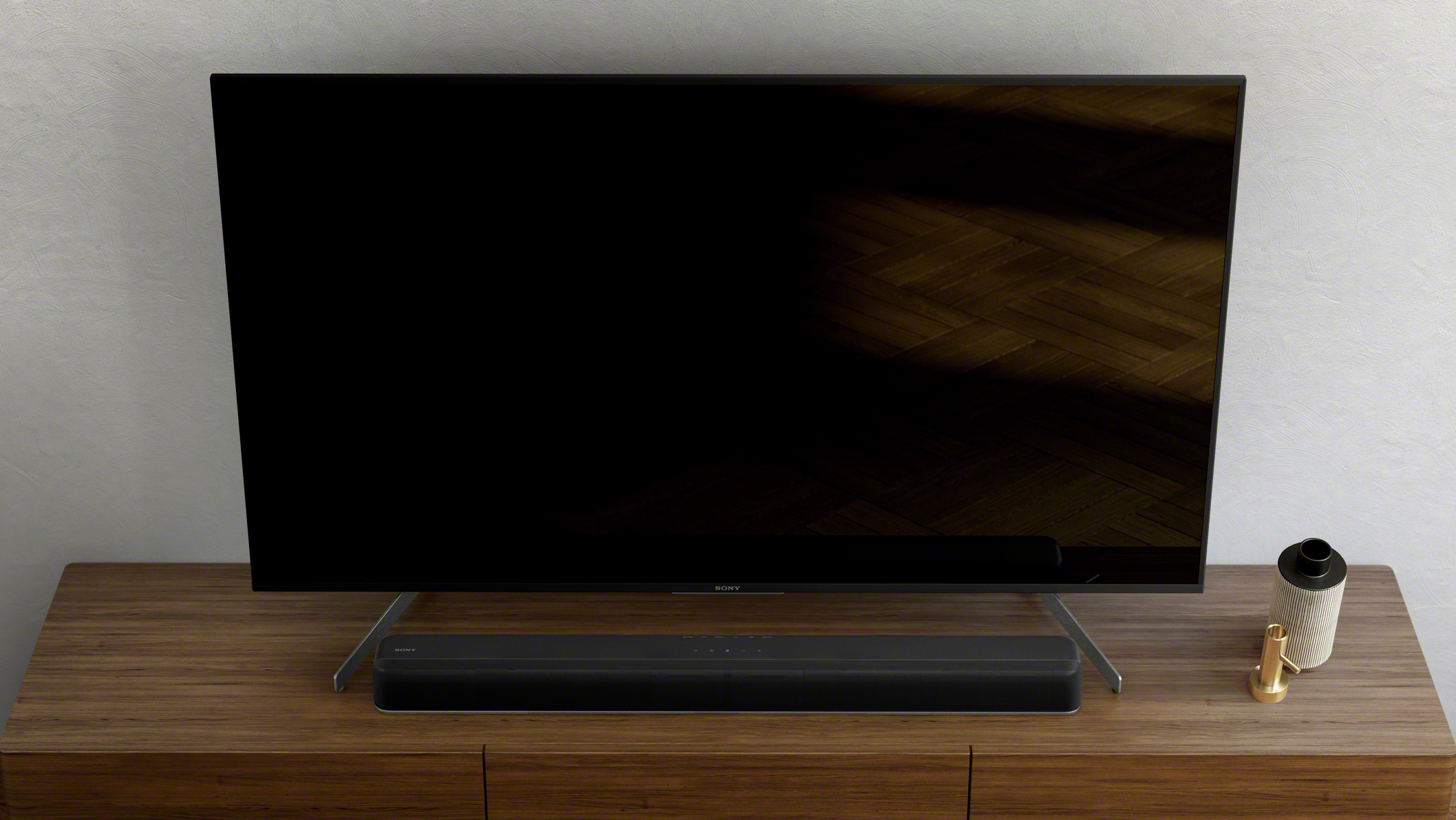
You can get an amazing picture from today’s ultra-slim TVs, with 4K and even 8K resolutions combined with HDR enhancements… but so often, you still need one of the best soundbars to help them reach their full potential. Let’s be honest, as great as the image quality from the best OLED TVs is, the sound that comes from something just a couple of millimetres thick usually sucks.
And that's at the premium end of the market – when you're looking at the best TVs under £1000 or the best TVs under £500, sound is often an area where you can tell that the set was on more of a budget than the no-holds-barred very best TVs. But just add a great soundbar and you’ll be well on your way to audio nirvana.
Two of the most popular soundbars we recommend are the Sonos Beam and the Sony HT-X8500, and it's easy to see why: both are inexpensive, compact enough for TVs from 43 inches and up, feature 2.1 stereo driver systems, and come with audio expertise from some of the biggest names in the business.
If you're looking for which of these soundbars is the best pick for you, it might be unclear exactly what the differences are… but they're actually pretty significant. We'll explain all.
- Meet the best gaming TVs of 2020
- Discover the world's best 8K TVs

Sonos Beam vs Sony HT-X8500: Price & features
The two soundbars differ slightly in pricing, with the Sony HT-X8500 costs a thoroughly reasonable £299/$299, with the Sonos Beam setting you back a bit more at around £369/$399. That's not a significant jump in spending, but if you’re thinking the Beam’s price premium is due to an expanded feature set, you’d be wrong.
In fact, the HT-X8500 is a strongly specified soundbar for its price bracket, boasting a 2.1-channel speaker system with built-in subwoofers. It supports both Dolby Atmos and DTS:X, applying psychoacoustic wizardry to create a more immersive sonic experience, so it's twin speakers sound like there are more sources of sound.
There’s an HDMI input as well as an output that connects to your TV, both of which pass 4K, HDCP 2.3 and high dynamic range (HDR10, HLG and Dolby Vision) through to your TV. This means that you don't lose the use of whichever HDMI socket you plug it into, which can crucial on lower-price TVs, which often have fewer connections.
Get all the latest news, reviews, deals and buying guides on gorgeous tech, home and active products from the T3 experts
The HDMI output to the TV also supports eARC, allowing compatible TVs to pass back lossless audio, so you can hear everything in the best possible quality. Finally there’s a decent remote, an optical audio input, and Bluetooth for streaming anything you like to it wirelessly.
While the Sony is aimed primarily at film fans, the Beam takes a different tack. There’s a similar 2.1-channel speaker layout, but the emphasis is on music, wireless streaming and multi-room functionality. There’s no remote – the Beam is controlled using the Sonos app, though takes volume control from your TV over HDMI – but there’s built-in Amazon Alexa and Google Assistant, making this ’bar a fully-functioning and agnostic smart speaker.
There’s a single HDMI-ARC connection with a cable included in the box, an Ethernet port for a wired connection, built-in Wi-Fi with Apple AirPlay 2 and Sonos' own multi-room streaming, but no Bluetooth. You don't get eARC here, but that's okay, because that's mostly a priority for Atmos and DTS:X soundtracks, which this doesn't support anyway.
However, the Sonos Beam only has one HDMI port, so when connecting this to your TV, you'll lose the use of that port for anything else – no problem for some people, but it might be a pain for others.

Sonos Beam vs Sony HT-X8500: Design & setup
The two soundbars actually look similar, and both offer all-in-one solutions with the speakers and amplification built into a single curvaceous cabinet.
The Sony HT-X8500 measures 890x64x96mm (WxHxD), making it wide enough for larger screen sizes but low enough so as not to block the screen. The overall design is slim, compact and unobtrusive, with touch sensitive controls on the top. The soundbar is finished in black, has a punched metal speaker grille at the front, subwoofer ducts at either end, and an eye-catching champagne-gold trim around the bottom.
The Sonos Beam offers a choice of black or white finishes, but otherwise its design is very minimalist, with a fabric grille that covers the front and sides, along with touch sensitive controls on the top. The Beam measures just 651x69x100mm (WxHxD), making it suited to smaller screen sizes – we'd suggest 55 inches at the absolutely max, but it's really best for between 32 inches and 50 inches. Overall the Beam looks elegant and discreet, getting on with sonic business in hand without drawing attention to itself.
Both soundbars are extremely easy to setup, and both offer the choice of stand or wall mounting. The HT-X8500 just needs to be connected to your TV via HDMI and you’re good to go, although if your TV doesn’t support ARC, you’ll can use the optical audio connection instead. The only other connectivity option is Bluetooth, allowing you to stream music from other devices. The included remote is unusually good for a soundbar, making control easy when you need it, though if it's connected over HDMI, it will take volume commands straight from your TV.
The Beam is set up using the Sonos app, and establishing a Wi-Fi connection, creating a multi-room system and setting up Alexa and Google Assistant is a cinch. The app is the main method of control for changing settings, but you can also use your TV remote or the smart assistants, which is a relief because most people won’t use their phones to simply change volume. If your TV supports HDMI-ARC you can use the provided cable, but if not you’ll need the included optical audio adapter.

Sonos Beam vs Sony HT-X8500: Sound quality
The Sony HT-X8500 sports a 2.1-channel system based around a speaker at either end of the cabinet, a pair of subwoofers in the middle and bass ducts at either end. All this is driven by powerful Class D digital amplification that creates an expansive front soundstage and fairly deep low frequency presence.
This soundbar’s big selling point is its ability to decode object-based 3D audio formats Dolby Atmos and DTS:X, and apply processing to create the illusion of greater depth and height. The result is a more immersive experience with movie soundtracks and streaming services such as Netflix and Disney+.
Sounds appear to come from higher and wider than most other budget soundbars, giving things a more cinematic presentation, though it can't replicate true surround sound, of course.
Regardless of your viewing habits, the X8500 has an audio preset for you, with cinema, music, game, news and sport modes. There’s also a voice mode for enhancing dialogue, along with a night mode that limits the dynamic range of sounds, so sudden explosions in you your 24-hour bingeing session won’t disturb the rest of the house.
Conversely the Sonos Beam eschews immersive audio trickery in favour of a traditional two-channel delivery better suited to music. Inside the cabinet are four full-range woofers and a tweeter, each of which has its own Class D digital amplifier, plus three passive radiators. The result is a big and powerful soundstage, with excellent stereo imaging and a surprising amount of bass thanks to those radiators. This soundbar is excellent with music, making it a useful addition to an existing Sonos multi-room system.
It also makes TV shows, movies and games sound better, although with less immersion compared to the Sony. There is the option to add wireless rear speakers from Sonos' range, which is a good option if you want a really compact surround system. You can even add Sonos' wireless sub, but this is hideously expensive.
It’s worth noting that neither soundbar has a dedicated centre channel speaker, which preferable for dialogue, but both handle voices with clarity and focus anyway – you'll find everyone is much more understandable than from your TV's built-in speakers.
If a centre channel and voice clarity is especially important at this kind of price, the Sony HT-G700 is basically a souped-up version of HT-X8500, and includes that third centre driver, though is an extra step up in price from either soundbar here.

Sonos Beam vs Sony HT-X8500: Verdict
Since there’s not a huge difference in price, which soundbar is best-suited for you will largely depend on your priorities. If you’re already invested in the Sonos multi-room ecosystem (or an Apple AirPlay one), the Beam is a no-brainer, seamlessly integrating with all the other speakers in your network. It sounds much bigger than it looks, helping to boost the sonic performance of your TV, and it’s superb with music. This is a dual-purpose soundbar – it's for tunes as well as TV.
If on the other hand you’re more interested in getting the most out of TV shows and movies, the Sony HT-X8500 is a great choice. It offers more in terms of HDMI connectivity, and delivers a pleasingly immersive experience with object-based audio soundtracks such as Dolby Atmos. It also sounds strong with music, so remains a great acoustic all-rounder, though the Sonos is still the hi-fi lovers' choice.
- The best 32-inch TVs – perfect for bedrooms and offices
- The best 43-inch TVs – great entry-level 4K sets
- The best 48- to 50-inch TVs – beautiful mid-size 4K TV sets
- The best 55-inch TVs – premium TVs that still fit most living rooms
- The best 65-inch TVs – beautiful big-screen TVs
- The best 75-inch TVs – giant 4K and 8K TVs packed with features

Steve Withers is a professional calibrator and freelance journalist who regularly contributes to T3, reviewing audio and video products, and writing articles. Steve has been writing about audio and video products for over ten years and, along with T3, he also contributes to TechRadar, Trusted Reviews, Expert Reviews, AVForums, Pocket-lint, Home Cinema Choice, and Wired. Steve is Level 2 certified with THX, the Imaging Science Foundation (ISF) and the Home Acoustics Alliance (HAA). As such, he remains abreast of all AV technology developments and the latest industry standards as we transition into a new era in home video and audio.
